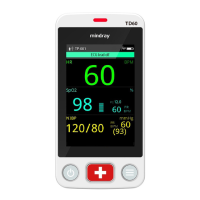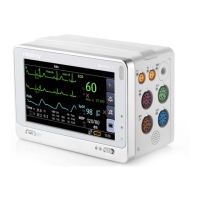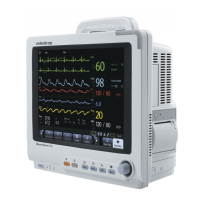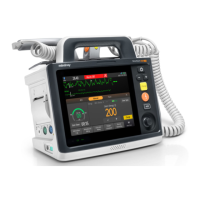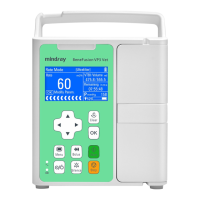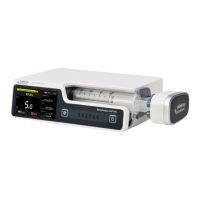BeneVision N Series Patient Monitor Operator’s Manual 14 - 3
• Additional information specific to the Masimo sensors compatible with the equipment, including
information about parameter/measurement performance during motion and low perfusion, may be
found in the sensor's directions for use (DFU).
• Masimo cables and sensors are provided with X-Cal™ technology to minimize the risk of inaccurate
readings and unanticipated loss of patient monitoring. Refer to the Cable or Sensor DFU for the
specified duration of the patient monitoring time.
14.3 SpO
2
Measurement Limitations
The following factors may influence the accuracy of SpO
2
measurement:
■ Patient physiological characteristics:
◆ Cardiac arrest
◆ Hypotension
◆ Darkly pigmented skin
◆ Shock
◆ Severe vasoconstriction
◆ Hypothermia
◆ Severe anemia
◆ Ventricular septal defects (VSDs)
◆ Venous pulsations
◆ Poor perfusion
◆ Dysfunctional hemoglobin, such as carboxyhemoglobin (COHb) and methemoglobin (MetHb)
◆ Elevated levels of bilirubin
◆ Vasospastic disease, such as Raynaud’s, and peripheral vascular disease
◆ Hemoglobinopathies and synthesis disorders such as thalassemias, Hb s, Hb c, sickle cell, etc.
◆ Hypocapnic or hypercapnic conditions
◆ Birthmark(s), tattoos, skin discolorations, moisture on skin, deformed or abnormal fingers. etc.
■ Interfering substances:
◆ Intravascular dyes (such as indocyanine green, methylene blue, indigo carmine, etc.)
◆ Dyes in the measure site, such as nail polish.
■ Environmental conditions:
◆ Excessive ambient light
◆ Electrosurgery equipment
◆ Defibrillation (may cause inaccurate reading for a short amount of time)
◆ Excessive patient/sensor motion
◆ Electromagnetic field
◆ Arterial catheters and intra-aortic balloon
■ Others
◆ Inappropriate positioning of the SpO
2
sensor, or use of incorrect SpO
2
sensor
◆ Cuff or arterial blood pressure measurement device on the same limb as the SpO
2
sensor.
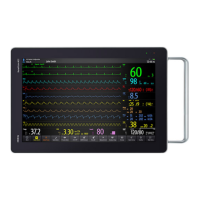
